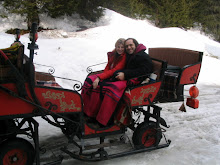
Ramses revenge has struck, so I didn’t really mind that we didn’t do much today except soak up the sun and drink. That night, we dressed in our vintage 30s outfits and appeared at dinner looking “smart” (according to our British table mates). Then the entire boat crammed into the bar for the belly dancing show.
Well, I’ve seen better dancers at Estrella war, but the following act showcased a guy in skirts, who basically just spun in a circle while pulling this wide-flaring fabric off over his head and spinning it around, and other similar tricks. Anyway, I enjoyed it.
Then my sweetie and I danced, doing some cha-cha, disco fox, blues, and rumba, and were actually complimented! “Thanks for showing them how it’s done!” a lady said to me. Since I consider myself to have two left feet, that made me feel pretty good.

A funny aside; I got a little tipsy at this party, and at some point wandered to the bathroom. I tried the door and it did not open. I thought, hey, there were several toilets in there, why would this be locked. It must be a bit stuck. Being drunk, I exerted way too much strength and ripped the entire doorknob off. As the door sagged open, I saw it was really just a supply closet, the bathroom was another door to my left. Oops.
The next morning was free time for us and we opted to walk to the Luxor museum. Almost immediately we were beset by carriage drivers who outright lied to me and said, “No, it’s this way! Very far. Your guide is a liar!”
We ignored him and continued on, hassled non-stop by drivers both horse and car. Truly began to get on my nerves. A child ran along at my feet, dirty, mumbling gibberish with her hand extended. Though I was tempted to toss her some money, I feared I’d be mobbed by a pack of kids once they smelled cash so I ignored her.
A man on street could tell we were a bit lost and asked where we were headed and then directed us. We had passed the museum about a block away. He didn’t even ask for baksheesh! Wow, new reference!
The museum was superb, and laid out extremely well. Photos weren’t allowed, which is a shame because the pieces on display were extraordinary. We saw more stuff from Tut’s tomb including an exquisite cow’s head representing Hathur.
But probably the most impressive was 24 well preserved statues, uncovered by accident. Some of them were in such excellent condition they looked like they’d been carved yesterday.
Hey, I forgot to mention! The ancient Egyptians used Boomerangs! GTFOOH! No, I’m serious! We saw several examples.
I also remember 2 statues of a pharaoh who had abolished some religion, and his sculptures were all distorted, looking like a caricature or an anime cartoon. It is said he did this to prove who was only acting for his god, and not for personal glory.
After lunch we set out for Karnak. Karnak is the largest temple in the world and is one of the most impressive sites we visited on this whole trip.
 Devoted to Amun, one of the chief deities of the Egyptian pantheon, it was constructed by and added onto by many Pharaohs over 1300 years. It’s actually a temple complex, with three main temples and a handful of smaller ones, but the main temple is to Amun.
Devoted to Amun, one of the chief deities of the Egyptian pantheon, it was constructed by and added onto by many Pharaohs over 1300 years. It’s actually a temple complex, with three main temples and a handful of smaller ones, but the main temple is to Amun.You enter along an avenue of Sphinxes, all with ram’s heads, indicating Amun.
There are massive statues all around Karnak and several gigantic walls which they refer to as pylons and seem very impressed by them. They are massive and covered with hieroglyphics and extremely cool - I’m just not sure why it isn’t just a wall.

The world’s largest obelisk still standing on its original base is at Karnak, erected by the Queen Hatshepsut, the queen who ruled as a man. Originally capped with a mixture of gold and silver called electrum, it stands 97 Feet and is carved from a single piece of granite.

Hatshepsut’s step-son, who succeeded her on the throne, erected the other obelisk on the site, but it is smaller than his mothers. In his anger at her, he had her name obliterated from the cartouche on her stone.
But the most impressive thing at Karnak is the some 350 massive columns that crowd the courtyard. With their tops carved to resemble the lotus flower - some in bloom, others closed - these towering monuments top 62 feet each. Engraved along every inch, some have even retained their original 3000 year old paint.

Ramses II had all of his engraved to double the depth of everyone else’s, making sure his monuments were not vandalized. And it worked. Though many groups have come through down the centuries and wrought destruction on Karnak, Ramses II monuments have definitely fared the best.


All of the carvings and hieroglyphics were once painted, and color still clings to some of the images. Can you imagine what this place must have looked like in its heyday, the gargantuan statues and the brilliantly colored walls? Amazing!











